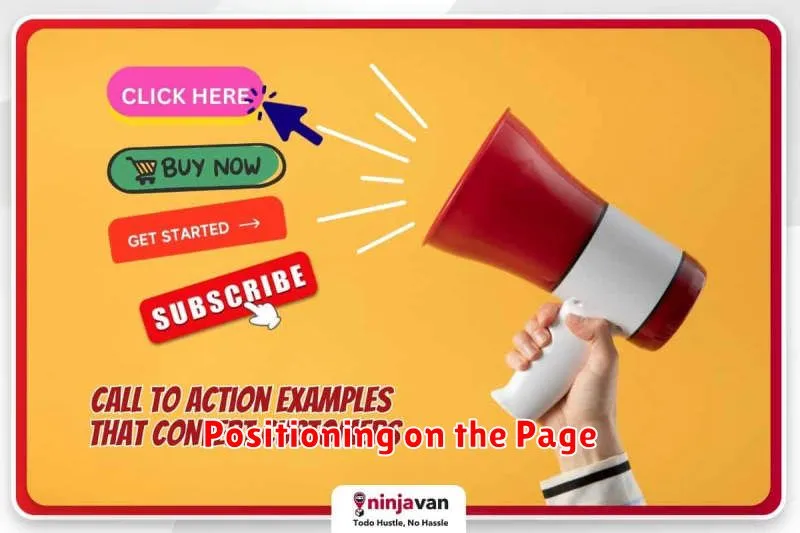In today’s competitive digital landscape, driving conversions is paramount to success. A critical component of achieving this lies in optimizing Call to Action (CTA) performance across various channels. Whether it’s your website, email campaigns, social media platforms, or paid advertisements, a compelling and strategically placed CTA can significantly impact your conversion rates. This article delves into the essential strategies and best practices for improving CTA performance and maximizing your return on investment across all your marketing channels. Understanding the nuances of CTA optimization is essential for any business seeking to enhance engagement and drive tangible results.
From crafting compelling CTA copy that resonates with your target audience to strategically placing CTAs within your content, we will explore the key elements that contribute to a high-performing call to action. This includes A/B testing different variations, analyzing data to understand user behavior, and adapting your CTA strategy based on performance insights. By implementing the tactics outlined in this article, you can transform your CTAs from passive elements into powerful drivers of conversions, ultimately boosting your bottom line and achieving your business objectives.
What Makes a CTA Effective?
A compelling call-to-action (CTA) is crucial for converting website visitors into customers. Several factors contribute to CTA effectiveness. A clear value proposition is paramount. The CTA should explicitly state the benefit a user receives by clicking. Will they download a resource, access exclusive content, or start a free trial? This clarity eliminates ambiguity and encourages engagement.
Action-oriented language also plays a vital role. Using verbs that inspire immediate action, such as “Get Started,” “Download Now,” or “Learn More,” creates a sense of urgency and directs users towards the desired action. Avoid passive language or generic phrases that lack persuasive power.
Visual prominence is essential. The CTA should stand out from the surrounding content, utilizing contrasting colors, sufficient white space, and an appropriate size. This ensures it catches the user’s eye and draws their attention.
Finally, context is key. The CTA should align with the user’s current stage in the sales funnel. A visitor browsing a blog post may respond better to a CTA for a related resource, while someone on a product page might be ready for a “Buy Now” prompt. Tailoring the CTA to the user’s journey enhances its relevance and effectiveness.
CTA Button vs Text Links
Choosing between a button and a text link for your call-to-action (CTA) is a key design decision. Each has its own strengths and weaknesses, and the best choice depends on the specific context.
Buttons tend to draw more attention due to their visual prominence. They are generally better for key conversions, like signing up for a newsletter or making a purchase. Their clear visual distinction makes them easily identifiable as actionable elements, reducing friction in the user journey.
Text links, on the other hand, are often perceived as less intrusive and more organic within the content flow. They work well for secondary actions, such as reading more about a specific topic or navigating to a related page. Overuse of buttons can lead to visual clutter, so text links provide a subtler alternative.
Consider the visual hierarchy of your page. If you want a CTA to stand out prominently, a button is usually the better choice. If you want to incorporate a CTA within a paragraph or a body of text, a text link is often more seamless. The key is to create a clear visual distinction between clickable and non-clickable elements.
Positioning on the Page

The strategic placement of your call to action (CTA) significantly influences its effectiveness. Users interact with web pages in predictable patterns, and understanding these patterns can inform optimal CTA placement.
Above the Fold: Placing your CTA “above the fold”—the portion of the webpage visible without scrolling—is often considered prime real estate. This ensures immediate visibility and can be effective for capturing users’ attention quickly. However, context is key. If the value proposition isn’t clear above the fold, a premature CTA might be ignored.
End of Content: Positioning the CTA at the end of your content, after the user has consumed all the relevant information, can be highly effective. This allows them to make an informed decision based on the value you’ve presented.
Within the Content: Strategically placing CTAs within the content itself can be beneficial, especially for longer pieces. These “contextual CTAs” can target users at specific points in their reading journey, aligning with their current level of engagement.
Consider User Experience: Avoid overwhelming the user with excessive CTAs. Strategic placement ensures that calls to action are prominent without being disruptive to the user experience.
Mobile Optimization: Given the prevalence of mobile browsing, ensure your CTA is easily accessible and appropriately sized on smaller screens. Test different positions to determine what performs best on various devices.
Testing Colors and Wording
A/B testing is crucial for optimizing CTA performance. Color psychology plays a significant role in how users perceive and interact with CTAs. Testing different hues can reveal which colors resonate best with your audience. Don’t assume a standard “best” color exists; what works for one audience might not work for another.
Equally important is the wording of your CTA. Test different phrasing to determine what motivates users to click. For example, “Get Started Now” might outperform “Sign Up,” or “Download the Report” might be more effective than “Learn More.”
Create variations with slight changes to isolate the impact of each element. For example, test a green button with “Get Started Now” against a blue button with the same text, then test the green button with “Sign Up.” This systematic approach helps pinpoint the most effective combinations.
Track key metrics such as click-through rate (CTR) and conversion rate to measure the success of each variation. Statistical significance is key; ensure you have enough data to confidently determine a winner.
Matching CTA with Funnel Stage
Aligning your call to action (CTA) with the user’s position in the sales funnel is crucial for maximizing conversions. Different stages require different approaches. A mismatched CTA can disrupt the user journey and lead to lost opportunities.
At the top of the funnel (TOFU), users are primarily researching and exploring. CTAs should focus on providing value and building trust, rather than pushing for a sale. Examples include “Download our free guide,” “Learn More,” or “Get Started.”
In the middle of the funnel (MOFU), users have demonstrated interest and are considering their options. CTAs should offer more specific value and encourage engagement. Consider using CTAs such as “Request a Demo,” “View Pricing,” or “Join our Webinar.”
At the bottom of the funnel (BOFU), users are ready to convert. CTAs should be direct and action-oriented, making it easy for them to complete the desired action. Strong examples include “Buy Now,” “Sign Up,” or “Get Your Free Trial.”
Analyzing CTA Click Rates
Analyzing click-through rates (CTRs) is crucial for understanding the effectiveness of your calls to action. A comprehensive analysis should encompass various factors influencing CTR, providing insights to optimize performance.
Key Metrics and Considerations
Begin by examining the overall CTR for each CTA across different channels. This provides a baseline understanding of performance. Next, segment your audience to identify variations in CTR based on demographics, behavior, or other relevant factors. This helps pinpoint specific groups that are responding well or poorly to your CTAs.
Consider the placement and prominence of your CTAs. Are they easily visible and accessible? Analyze the surrounding content and design elements to ensure they don’t detract from the CTA’s effectiveness.
Data Collection and Interpretation
Utilize analytics tools to collect accurate data on CTA performance. Track clicks, impressions, and conversions to calculate CTR and assess the overall impact. Regularly monitor these metrics to identify trends and patterns, enabling you to adapt your CTA strategy accordingly.
A/B testing is essential for optimizing CTR. Experiment with different variations of your CTAs, such as wording, color, and placement, to determine which versions perform best.

